Over the years I’ve noticed how many people I know have had a personal experience with a famous person. Me? Just a few. But to illustrate what a tiny, tiny world we live in, I’ve collected stories of meaningful encounters my own friends have had with well-known people – not just “saw them in a coffee shop while walking down Rodeo Drive” but real conversations, exchanges, and relationships. You’ve heard of “Six Degrees of Kevin Bacon”? Well, this page features only One Degree (or Zero, if it’s one of my encounters) of Separation. Adding to the list regularly!
Jack Ruby “murdered Lee Harvey Oswald in Dallas, Texas on November 24, 1963, two days after Oswald was accused of the assassination of President John F. Kennedy.” (from Wikipedia; for details, click on the link)
W. Robert (Bob) Beavers, MD was a prominent psychiatrist and faculty member at the University of Texas Southwestern Medical Center in Dallas for many years.
“Noting that indigent citizens accused of capital crimes had legal representation but no psychiatric evaluations, he volunteered to work with Clayton Fowler, President of the Dallas Criminal Bar Association, to provide such services when asked. In this way, he became the evaluator and later treating doctor of Jack Ruby after Ruby was found to be psychotic in his county jail cell. Bob testified in 1965 before the Warren Commission that was investigating the assassination of President John F. Kennedy. His papers pertaining to the assassination are now in the Sixth Floor Museum at Dealey Plaza.” (from Beavers’ obituary published in the Dallas Morning News)
I met Bob through the Texas Association for Marriage and Family Therapy (TAMFT) in the mid-1980s. Bob was active in family therapy circles – local, state, and national – and an influential MFT theorist and educator. He once asked me to join his faculty at the Southwest Family Institute, but I declined because the extra commitment would have been significant, and I was working toward tenure at Texas Woman’s University.
I last spoke to Bob in 2018 as I was working on a manuscript about the history of the American Association for Marriage and Family Therapy (AAMFT). Bob served as President of that prestigious organization from 1987-1988.
(NOTE: This is my second “One Degree of Separation” from the assassination of President Kennedy; see my Oswald story below.)
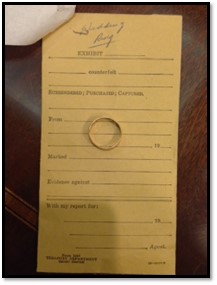 For five years, every day I looked out my office window I saw the street corner where Lee Harvey Oswald shot Officer J.D. Tippit on November 22, 1963. Tippit was the second person to die at Oswald’s hand that fateful day; the first was President John F. Kennedy.
For five years, every day I looked out my office window I saw the street corner where Lee Harvey Oswald shot Officer J.D. Tippit on November 22, 1963. Tippit was the second person to die at Oswald’s hand that fateful day; the first was President John F. Kennedy.
I worked at the Salesmanship Club Youth and Family Center (now Momentous Institute) in the early 2000s. Our building complex was situated in Oak Cliff, a Dallas neighborhood that became famous because it was where Oswald lived, killed the Dallas police officer, and was captured. East 10th Street and North Patton Avenue, the corner where Oswald pulled his revolver and shot Tippit, is just two blocks east of Momentous Institute’s main campus. Little did I know I would be connected (with one degree of separation) to Lee Harvey 50 years later…
 My wife Lori finished her law career at Brackett and Ellis, P.C., a large law firm in Fort Worth. Luke Ellis came into possession of Lee Harvey Oswald’s wedding ring because Forrest Marquart, a member of the law firm who had represented Marina Oswald, had left it in his files when he retired. Because Marquart was in ill health, it fell to Ellis to protect the ring, who kept it in the law firm’s safe for many years.
My wife Lori finished her law career at Brackett and Ellis, P.C., a large law firm in Fort Worth. Luke Ellis came into possession of Lee Harvey Oswald’s wedding ring because Forrest Marquart, a member of the law firm who had represented Marina Oswald, had left it in his files when he retired. Because Marquart was in ill health, it fell to Ellis to protect the ring, who kept it in the law firm’s safe for many years.
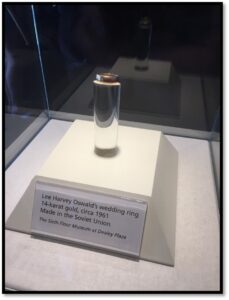 The Secret Service had returned Oswald’s ring to Marina about a year after her husband, Kennedy’s assassin, was shot and killed by Jack Ruby. “(T)he assumption is that Marina gave Mr. Marquart the ring as payment for services rendered.” Although Anesworth’s (2007) article leaves the reader in doubt regarding its final owner, the ring was acquired by The Sixth Floor Museum at Dealey Plaza (www.jfk.org). This nonprofit organization, located on the floor from which Oswald fired on Kennedy and the motorcade, has the ring on permanent display.
The Secret Service had returned Oswald’s ring to Marina about a year after her husband, Kennedy’s assassin, was shot and killed by Jack Ruby. “(T)he assumption is that Marina gave Mr. Marquart the ring as payment for services rendered.” Although Anesworth’s (2007) article leaves the reader in doubt regarding its final owner, the ring was acquired by The Sixth Floor Museum at Dealey Plaza (www.jfk.org). This nonprofit organization, located on the floor from which Oswald fired on Kennedy and the motorcade, has the ring on permanent display.
Here’s the story of the ring’s journey: http://jfkfiles.blogspot.com/2007/10/mystery-surrounds-lee-harvey-oswalds.html?m=1.
The ring is mentioned in “The Crisis Hours” section of The Sixth Floor Museum at Dealy Plaza’s website: https://www.jfk.org/exhibits/john-f-kennedy-and-the-memory-of-a-nation/
Mark and I have been good friends for more than 20 years. He has lived in Los Angeles most of his life, rubbing shoulders with and often befriending well-known people.
 “Thich Nhat Hanh spent a summer with our six-person meditation group when he first came to this country. This was around 1980, before he was well known in mindfulness circles.
“Thich Nhat Hanh spent a summer with our six-person meditation group when he first came to this country. This was around 1980, before he was well known in mindfulness circles.
“We had a Zen group that met in Malibu every Sunday, led by Peter Levitt. The place was called Little Zendo – about 200 square feet with a small stream outdoors where we would sit together. “Thay” (the affectionate name they used for Thich Nhat Hanh) showed up one Sunday, honoring Peter’s invitation. ‘I wrote the introduction to his first book,’ said Peter. ‘He’s here for the summer and is going to stay with me.’ I was about 30, a quiet guy; the others included an engineer and four poets.
“Thay had such a presence…when he sat in the room with us, it felt different; more calm. I was into kickboxing at the time (see Jodie Foster story below), and I talked with Thay about that, whether someone can be macho and have a Buddha nature. Just looking at him would calm me down! We would simply sit together or experience a kinh hành (slow walk meditation). We had great conversations about Buddhism, Christianity, and suffering. I’ve never met anyone like him; he was the most peaceful man I’ve ever known.
“After his first book was published, he became a huge cultural force. Many call him the Father of Mindfulness. I saw him at Loyola Marymount University about 15 years ago when he gave a talk. (FNT: Mark taught at LMU for many years.) I went up to him afterward and he recognized me!
“When Martin Luther King, Jr. received the Nobel Peace Prize, he said Thich Nhat Hanh should’ve gotten the award instead.”
Ricky Lee Green, a native of Fort Worth, has been compared to Ted Bundy and is considered one of the worst serial killers in US history.
Alan Levy, a friend of mine for more than 30 years, led the prosecution team against Green for the murder of a television executive that took place in 1986 in Tarrant County, Texas. Alan was the chief felony prosecutor for the Tarrant County District Attorney’s Office for decades. Because Green had killed at least three other people, Alan traveled to Huntsville, Texas where Green was held on Death Row for years, right up to the month of his execution, in hopes of closing additional murder cases Green might have committed.
Alan is one of the wittiest people I’ve ever known and a relentless prosecutor. When interviewed about the jury’s verdict that gave Green the death penalty, Alan told the Tyler Morning Telegraph reporter, “I don’t think it was necessarily a job of brilliant lawyering (to convince the jury to sentence Green to death for the murder). The fact there were four corpses was a big help.”
Michele Weiner-Davis and I have been friends for nearly 35 years. Here’s her story of connection with a famous person we all know:
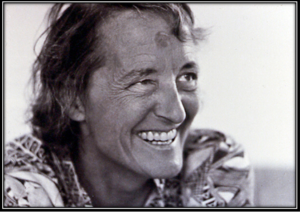 There is one degree of separation between me and a brilliant woman who changed our culture for the better: Elisabeth Kubler-Ross. As most people know, Elisabeth defied our culture’s taboo concerning talking about death and outlined (her theory about) stages people go through as they grieve the loss of loved ones. She also taught people to feel more at peace with death and how to emotionally support those who are dying.
There is one degree of separation between me and a brilliant woman who changed our culture for the better: Elisabeth Kubler-Ross. As most people know, Elisabeth defied our culture’s taboo concerning talking about death and outlined (her theory about) stages people go through as they grieve the loss of loved ones. She also taught people to feel more at peace with death and how to emotionally support those who are dying.
My mother, also a therapist, was Elisabeth’s right-hand person for many years. They worked as a team throughout Europe. When my mom was recovering from colon cancer, she stayed in my home. Elisabeth visited her there and I got to meet her and thank her for supporting my mom. By visiting during this stressful time, I felt Elisabeth walked the talk.
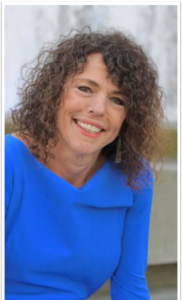 One of the most well-known marriage counselors on the planet, Michele Weiner-Davis has had “the opportunity to be on practically every nationally syndicated talk and news show one could imagine,” including Oprah (two appearances), The Phil Donahue Show, The Today Show (several times), Good Morning America, 20/20, and the CBS Evening News. Her TED Talk, The Sex-Starved Marriage, has been viewed on YouTube over nine million times. Michele still counsels couples and is one of the finest psychotherapists I know.
One of the most well-known marriage counselors on the planet, Michele Weiner-Davis has had “the opportunity to be on practically every nationally syndicated talk and news show one could imagine,” including Oprah (two appearances), The Phil Donahue Show, The Today Show (several times), Good Morning America, 20/20, and the CBS Evening News. Her TED Talk, The Sex-Starved Marriage, has been viewed on YouTube over nine million times. Michele still counsels couples and is one of the finest psychotherapists I know.
From FNT:
Kara R. Stribling, a native of Los Angeles, began stage acting at the age of five, with long theater runs and a variety of top roles. Her energy moved toward television around age seven, and she landed roles on “Jonas,” “My Name is Earl,” “Desperate Housewives,” “Carpoolers” (with Dave Foley), and “Lopez Tonight” (starring George Lopez). She also acted in films, including “The Jane Austen Book Club” (with Emily Blunt) and “Santa Clause 3.”
Kara was a master’s student of mine at TCU. Today she works for the TCU College Advising Corps assisting first-generation high school students on their paths to higher education. Plus, Kara’s a dedicated dog rescuer.
From Kara:
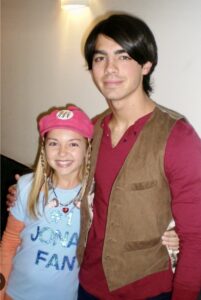 “Some girls would literally kill for the chance to work with the Jonas Brothers for three days. I will never forget my callback for the Disney Jonas (2009-2010) episode, “Keeping It Real,” directed by Fred Savage (FNT: star of “The Wonder Years”). I, a preteen girl, was not a fan of boy bands, so I had to make a trip to the Justice! store for girls to deck myself out in Jonas gear to really sell the ‘#1 Fan’ energy at my callback for the role. I walked in and shared some lines and laughs with the producers and Fred; the next thing I heard, I had booked the role!
“Some girls would literally kill for the chance to work with the Jonas Brothers for three days. I will never forget my callback for the Disney Jonas (2009-2010) episode, “Keeping It Real,” directed by Fred Savage (FNT: star of “The Wonder Years”). I, a preteen girl, was not a fan of boy bands, so I had to make a trip to the Justice! store for girls to deck myself out in Jonas gear to really sell the ‘#1 Fan’ energy at my callback for the role. I walked in and shared some lines and laughs with the producers and Fred; the next thing I heard, I had booked the role!
“Filming my episode of Jonas was an absolute blast! I came to know the main three Jonas brothers as well as their rebellious rascal of a little brother, Frankie. Nick was always quiet and kind. Joe was sarcastic and had funny ideas to become a dark thriller or horror movie producer one day. Kevin was the goofball that kept us all laughing, like when he would forget he left his two Blackberry phones (one in each pocket) before the shot so we would have to do another take. There were laughs and good memories. Also, lots of jealous extras were not acting when they played the crazed fans!
 “I had a great time, and all three brothers were very down-to-earth. I also got to meet their grandfather on set, who spent a lot of time chatting with my mom. It’s a very lovely family, and it has been fun watching them reunite many years after their Disney show.
“I had a great time, and all three brothers were very down-to-earth. I also got to meet their grandfather on set, who spent a lot of time chatting with my mom. It’s a very lovely family, and it has been fun watching them reunite many years after their Disney show.
“Being nostalgic, I even recreated my ‘#1 Fan’ wardrobe outfit to attend their recent concert in DFW. I would have loved to get an updated photo with them, but alas, singers cannot risk getting COVID on the road, so they had postponed any meet and greets. Perhaps another time, but at least this retired child actress got to have her Disney Channel moment!”
I’ve been friends with Mark Mitchell – psychotherapist, professor, and wilderness survival trainer – for over 20 years. We room together at solution-focused therapy conferences because (a) we’re cheap, and (b) we both like to take naps, so we always had “quiet time” after lunches!
MARK:
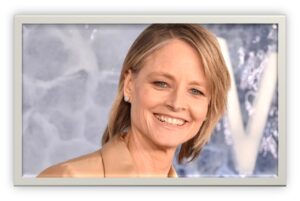 I was Jodie Foster’s kickboxing sparring partner for a few years in the 1980s after she had been stalked by criminal John Hinkley, Jr. (FNT: Hinkley shot President Ronald Reagan in March 1981).
I was Jodie Foster’s kickboxing sparring partner for a few years in the 1980s after she had been stalked by criminal John Hinkley, Jr. (FNT: Hinkley shot President Ronald Reagan in March 1981).
At that time Venice (CA), where Jodie lived, was a bad neighborhood. It’s now gentrified. SteeleBoxer in Marina del Rey (FNT: where Mark lives) is right next door to Venice. It was one of the only places in LA that taught kickboxing, combining Muhammed Ali and Bruce Lee. Kickboxing was really novel then. I went there because it was cheap — $10 a session.
Jodie was interested in kickboxing because she felt the need to be able to defend herself. I trained there most every Tuesday and Thursday at 2pm, which overlapped with Jodie’s training times. So the owner Chris Steele introduced me to Jodie as a potential training partner. She seemed like the girl next door, unassuming, quiet…until she stepped in the ring. Chris told us, “Jodie can do everything and anything to you; all you can do, Mark, is defend yourself. Her job is to practice unloading on you.” I wore all the padding they had, of course, and I needed it – she really poured it on. Once she kicked me in the head by accident. She stopped, dropped her hands, and asked, “Mark, are you OK?” She was really concerned about me. I said, “Don’t do that.” She never did it again!
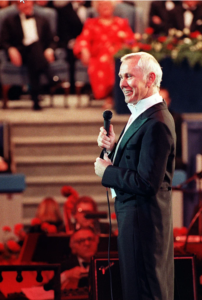 “Heeeeeeeeeeere’s JOHNNY!” The Tonight Show starring Johnny Carson was part of millions of US households’ late-night television viewing for three decades. Carson’s hometown was Norfolk, Nebraska, and my mother-in-law, Carlene (Miller) Watchorn, went to high school with him.
“Heeeeeeeeeeere’s JOHNNY!” The Tonight Show starring Johnny Carson was part of millions of US households’ late-night television viewing for three decades. Carson’s hometown was Norfolk, Nebraska, and my mother-in-law, Carlene (Miller) Watchorn, went to high school with him.
Carlene kept close ties to high school classmates from Norfolk (pronounced by natives as “Norr-fork”) throughout her life, driving the one-hour trip from her home in Yankton, SD to Norfolk several times a year to visit.
“He was kind of nerdy,” Carlene once told me about the Johnny Carson she knew. “I saw some of the magic shows he put on at the high school.”
Carson is Norfolk’s most famous resident. Besides generously donating funds to build a cancer treatment facility, the six-time Emmy winner’s gifts also led to the creation of the Norfolk Arts Center. A wing of the Elkhorn Valley Museum is dedicated to Norfolk’s celebrity son, and a portion of US Highway 81 that runs through the heart of the city was named Johnny Carson Boulevard by the State of Nebraska in his honor.
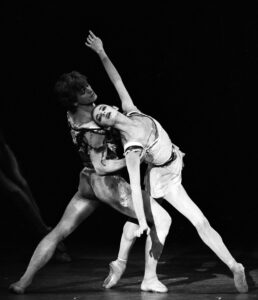 Leonid Lubarsky was the Artistic Director of the Lubbock Civic Ballet (now Ballet Lubbock) while Lori and I attended Texas Tech University in the mid-1980s. Leonid was close friends with Mikhail Baryshnikov, perhaps the most famous male ballet performer of our time. Leonid and Mikhail danced together in the Kirov Ballet (USSR) before Leonid emigrated.
Leonid Lubarsky was the Artistic Director of the Lubbock Civic Ballet (now Ballet Lubbock) while Lori and I attended Texas Tech University in the mid-1980s. Leonid was close friends with Mikhail Baryshnikov, perhaps the most famous male ballet performer of our time. Leonid and Mikhail danced together in the Kirov Ballet (USSR) before Leonid emigrated.
Baryshnikov was on tour in 1987, with a performance scheduled in Amarillo, Texas. As Amarillo is a mere two-hour drive from Lubbock, Leonid somehow arranged to visit Mikhail backstage prior to the show and traveled to see his friend perform. Upon his return to Lubbock, Leonid regaled me and others with details from his visit. He told us Baryshnikov had directed the stage manager to leave him alone with Leonid, not to be interrupted, and the two of them spoke for nearly an hour before saying a tearful backstage goodbye.
Born in Odessa, Ukraine (then part of the USSR) to Jewish parents, Leonid was a delightful storyteller and a phenomenal dancer and teacher. He fled the USSR on a 24-hour visa and emigrated to the US, finding a welcoming community in West Texas after stops in New York and Dallas. Our daughter Allison benefitted from his tutelage as she began her own ballet and dance journey with Suzanne Aker and Leonid while we lived in Lubbock. I shared many conversations and much laughter with Leonid, as Lori was a member of the LCB Board of Directors so I got to tag along to the parties. My favorite Leonid story: Lori and I attended an informal party hosted by Leonid and his wife Dana. While Lori and I plus a few others were chatting with Leonid, a lull came over the room. We’ve all experienced it: noise levels ebb and flow in crowds, and it suddenly become quite hushed. Leonid leaned over to us and said, “When this happens in Russia, we say, ‘another policeman was just born.'” (long silence) Then he smiled and said, “Drink up! Na Zdorovie! (Nostrovia!),” clinking his vodka glass against ours. And we did!
 While a student at the University of South Dakota in the early 1970s, I became friends with Lois Tlustos from Pierre, SD. Lois grew up on a South Dakota reservation, “the only white child in a school of Sioux Indian youngsters” where her father was principal, and her mother wanted her to become a lawyer. But she didn’t stay at USD long enough to graduate, leaving to study at the Lee Strasberg Theatre & Film Institute in New York and performing in 31 plays before landing in Hollywood to pursue her lifelong dream of television and film acting. Lois was better known outside of South Dakota by her screen name, Angela Aames.
While a student at the University of South Dakota in the early 1970s, I became friends with Lois Tlustos from Pierre, SD. Lois grew up on a South Dakota reservation, “the only white child in a school of Sioux Indian youngsters” where her father was principal, and her mother wanted her to become a lawyer. But she didn’t stay at USD long enough to graduate, leaving to study at the Lee Strasberg Theatre & Film Institute in New York and performing in 31 plays before landing in Hollywood to pursue her lifelong dream of television and film acting. Lois was better known outside of South Dakota by her screen name, Angela Aames.
One Degree of Separation (first of 3!): Angela played opposite actor Ted Danson in the first season of Cheers as Brandee (“with two E’s”) in the episode, “Sam’s Women.”
Angela had recurrent roles in B.J. and the Bear (1979-1981) The Dom DeLuise Show (1987) and Night Court (1984) and appeared in films including Bachelor Party (1984), The Lost Empire (1984), and Basic Training (1985). She was active in commercials, film, and television up until her untimely death from a heart virus in 1988 at the age of 32.

(DJ Skee entertained the crowd at the Vikings-Packers game aired on “NBC’s Sunday Night Football,” 12/31/2023)
Better known in the entertainment industry as DJ Skee, Scott Keeney is a phenom in the entertainment world and has become one of the most influential and admired people in today’s music scene. Scott is the son of Bradford Keeney, one of my professors at Texas Tech University. Brad and I coauthored several articles and book chapters and presented together at international conferences. I stood up for Brad when he and Hillary married in New Orleans a decade ago, taking wedding photographs they still use for promotional purposes. I knew Scott as a young child. He trick-or-treated at our home in Lubbock, Texas and accompanied his dad to campus events.
From Skee’s website: As a DJ, Skee is best known for introducing the world to artists including Kendrick Lamar, Lady Gaga, Post Malone, Travis Scott, and more on his TV and radio platforms. Skee has produced for defining artists of this era, ranging from Snoop Dogg to Michael Jackson, and composed music for top-selling video game series like HALO and Ghost Recon. As a performer, Skee has opened up and held residencies at high-profile clubs and venues globally, including XS at the Wynn/Encore in Las Vegas and US Bank Stadium in Minneapolis. Skee has been honored with numerous awards and accolades, including Mixtape and Radio DJ Of The Year, Billboard and Forbes “30 Under 30,” as well a mayoral proclamation in his hometown of St. Paul, Minnesota, declaring May 26th “DJ Skee Day.” In raw numbers, Skee has generated over four billion views and has a network of over two million followers.
Nick Hexum, lead singer of this popular rock band, is the son of Dr. Pat Hudson, a family therapy colleague I’ve known for 30+ years. My friend Pat is the daughter of the late Dr. Lofton Hudson, a well-known pastoral counselor from Omaha, Nebraska, and she now lives in Texas. (Nick’s middle name is Lofton.) Pat often posts photos of her family, including Nick and his spouse and children, on Facebook.
311 (pronounced “three-eleven”), was formed around 1990 in Omaha, Nebraska. The band’s name comes from “the police code for indecent exposure” and came about “after a friend of the band was arrested and cited for skinny dipping in a public pool.” 311’s “music is a blend of rock, reggae, hip hop and funk” and “has been described as alternative rock, reggae rock, rap rock,” and other genres. Their third album, 311, went triple platinum, with two others going platinum and an additional two reaching gold status (Wikipedia).
Glen Campbell was on tour years ago and performed a concert in Sioux Falls, SD. Turns out Glen nearly cancelled his performance, as he had come down with a very sore throat. But his manager contacted a local hospital to find out if a otorhinolaryngologist (ear, nose and throat specialist, or ENT) would make a “house call” to the hotel where Glen was staying. My friend Dr. Richard “Gunnar” Gunnarson was on-call, so he packed up his kit and drove to the hotel to offer assistance. When he entered the suite, the heat engulfed him – the thermostat was set on 85 degrees. He quickly moved over, turned down the thermostat, and told everyone in the suite to leave it where he set it. Campbell himself moved to turn the thermostat up; Gunnar said, “If you want me to treat you, leave it where it is.” He then examined Glen, sprayed his throat with a low concentration of cocaine mixed with a liquid (the best treatment at the time), and did his best to help the musician regain his voice for the upcoming concert. Campbell gave Gunnar tickets to the concert, which he and his wife Jacque used that evening. When intermission began, the PA announcer said, “Will Dr. Gunnarson please come back stage – Dr. Gunnarson, backstage, please.” Gunnar went backstage to find the musician asking for another spray treatment of his throat so he could make it through the last set of the evening. Gunnar obliged but with a warning: no more, as there are medical reasons for limited cocaine treatments. The musician pleaded with Gunnar for additional treatments and house calls, but Gunnar stood firm. The musician finished the evening in fine voice. (I wrote up this story, and Rev. Dennis Thum told it at Gunnar’s funeral back in 2012. Gunnar was a dear friend, “a living eccentric” I honored in in the foreword to my book, “Tales from Family Therapy.”)
In 1983 I was in Sioux Falls (SD) visiting my dad who was dying of pancreatic cancer. My sister Renae was volunteering for the Special Olympics that weekend, and Dad said he’d like to attend and cheer on the participants. We stayed awhile, but he tired quickly, so we began to walk from the Howard Wood Stadium bleachers to the parking lot. On the way, Dad located a pole vaulting pit and decided to sit down on the pad and rest awhile. He laid back in the pit and we just talked a bit. Then I spotted a South Dakotan nearly all voters would recognize. US Senator Larry Pressler was walking alone toward us, headed to the stadium. He saw me standing by the pit, smiled, and then almost walked on by…but he spotted Dad. “Well, Dar, how are you?” Dad greeted him: “I’ve had better days, Larry, but I found a spot to rest.” They chatted for a few minutes about weather, crops, and the Special Olympics. Then Senator Pressler said, “it was great to see you again, Dar – take care!” and walked on. I turned to my dad, flabbergasted: “You know Senator Larry Pressler?” “Oh yeah. He interned with me when he was in college, or maybe right after college. Some time back in the ‘60s. Good guy, really smart.” (Pressler was a Rhodes Scholar and earned a Masters in Public Administration and a law degree, both from Harvard.) I picked up my jaw, lent a hand to Dad, and pulled him up so we could walk to the car. He’d never said a word about Sen. Pressler before, and he never mentioned him to me again.
Frank Thomas
I was in Chicago for a family therapy conference in the late 1990s. The venue: The Chicago Hilton. Swanky, pretty high dollar for this Midwesterner. Hanging out in the lobby people-watching and killing time before dinner, I noticed Major League Baseball Hall of Fame pitcher Nolan Ryan standing alone. He appeared to be waiting for a ride – he had his suit bag thrown over his shoulder, suitcase at his feet, and he was looking out toward the taxi/valet area. Everyone was noticing him – I mean, he’s a baseball HOF’r, 6’2” tall and broad as an ax, so you can’t miss him – but he was alone, obviously waiting for someone, killing time like me. I thought, “Why not? Take a chance.” So I walked up to him, extended my hand, and said, “Mr. Ryan, I’m Frank Thomas from Fort Worth. I saw you pitch in the Basin League in South Dakota when I was 12 years old, the same summer I saw Don Sutton pitch.” He grinned and said, “I was only 18 years old. Where did you see me play?” We were off. The first 10 minutes, he reminisced on the start of his baseball career in the minor leagues, including the SD Basin League. (He’d retired from MLB in 1993.) Since I knew he was from Refugio, TX (I pronounced it correctly, which impressed him), we also talked about the Texas Rangers (he later became a co-owner and CEO of the team) and Texas life and culture in general. His drawl is pronounced, and several times he laughed when I said, “I didn’t get that last word…”. After about 20 minutes of conversation, with people crowded around and whispering, “That’s Nolan Ryan!”, he spotted his ride through the wall of glass. “Great talking with you, Frank.” “My pleasure, Mr. Ryan. By the way, I think you won that game…” One last chuckle escaped him as he waved and headed out the door. A class act.
From Michael’s “Salute to Rosalynn Carter” on Facebook the day after she died in 2023. Reprinted with permission:
“I was privileged to get to know her in a professional capacity. For about 15 years while I was the Executive Director of the American Association for Marriage and Family Therapy (AAMFT), every November I would spend 3 or 4 days at the Carter Center with her in a small group working on the Family Caregiving Coalition (a Carter Center program) (she was very concerned about family burden in disability, medical and end of life care), and then at the Mental Health Symposium she sponsored and championed there. There was always one night where she hosted a dinner for the group. She came and spoke at (the 1997 AAMFT Conference in Atlanta) and we honored her with a Humanitarian Award. She came to the AAMFT offices (in Washington, DC and later in Alexandria, Virginia) when we hosted day-long meetings of the Family Caregiving Coalition. We weren’t friends, exactly, but we knew one another well enough that when she saw me one day at National Airport she stopped walking, called me over, and we had about a 10 minute visit to talk about the latest issues of the day in mental health. So our relationship was professional, with friendly overtones. Of course, every time I watched Rosalynn interact with anyone it was the same: personal, thoughtful, and unhurried. She ‘saw’ people. And she let them know. She had a warmth and also a very quick sense of humor. Jimmy was also always around for those meetings at the Carter Center…but he always made sure that she was the center of the efforts she believed in and championed. They were the most gracious, unpretentious couple you would ever meet. …it was an honor to have her in a small part of my life and work.”
